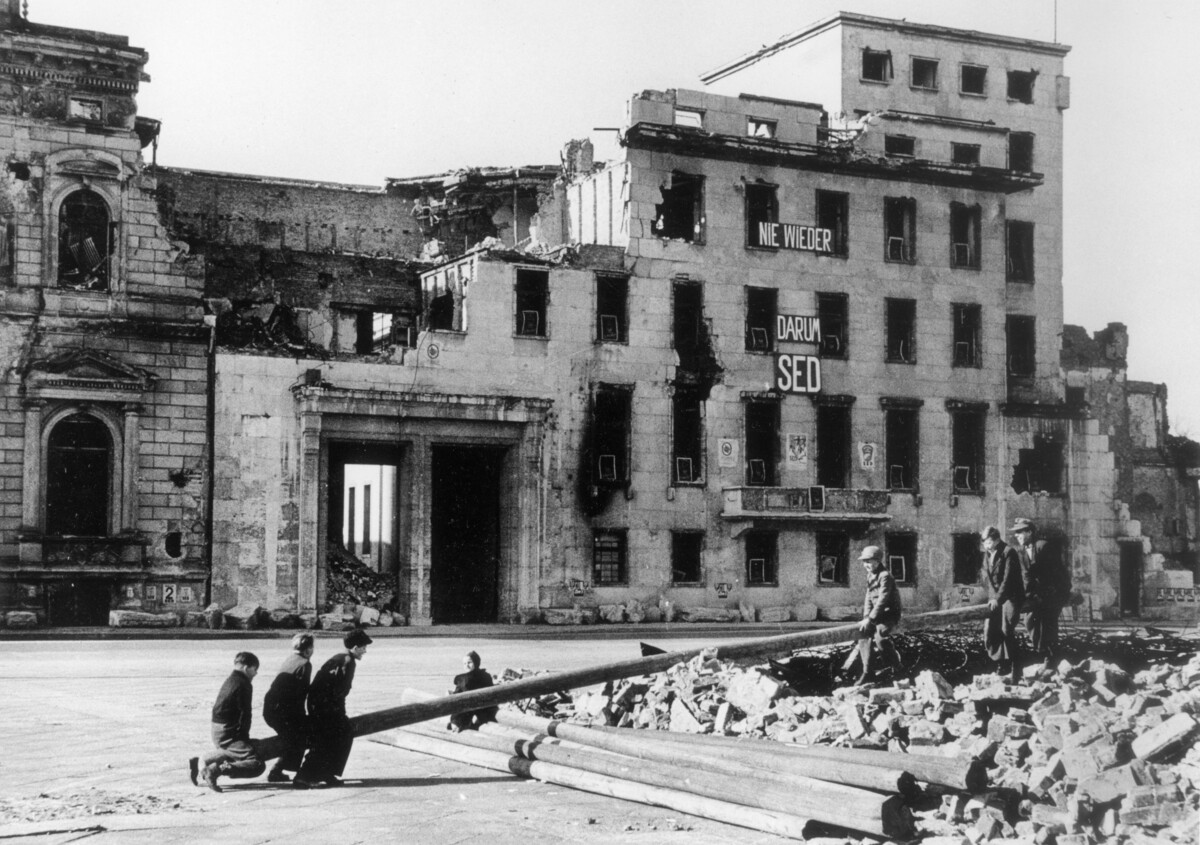Abstract
At the end of the war, large sections of the German
capital city Berlin lay in ruins. The government quarter, the scene of heavy
fighting up to the bitter end, suffered particular damage and was largely
destroyed. For the children who remained in Berlin (and in many other German
cities), devastated urban landscapes were exciting and dangerous playgrounds
for adventure. The boys shown below are seesawing in front of the ruins of
the Reich Chancellery on Wilhelmstraße.
The ruins of the capital were
also used for political purposes: for example, the Socialist Unity Party of
Germany [Sozialistische Einheitspartei Deutschlands
or SED], relied upon the symbolism of the ruins to advertise their
“anti-Fascist” and “anti-imperialist” policies. The slogan on the destroyed
Chancellery reads, “Never again – therefore SED.”
